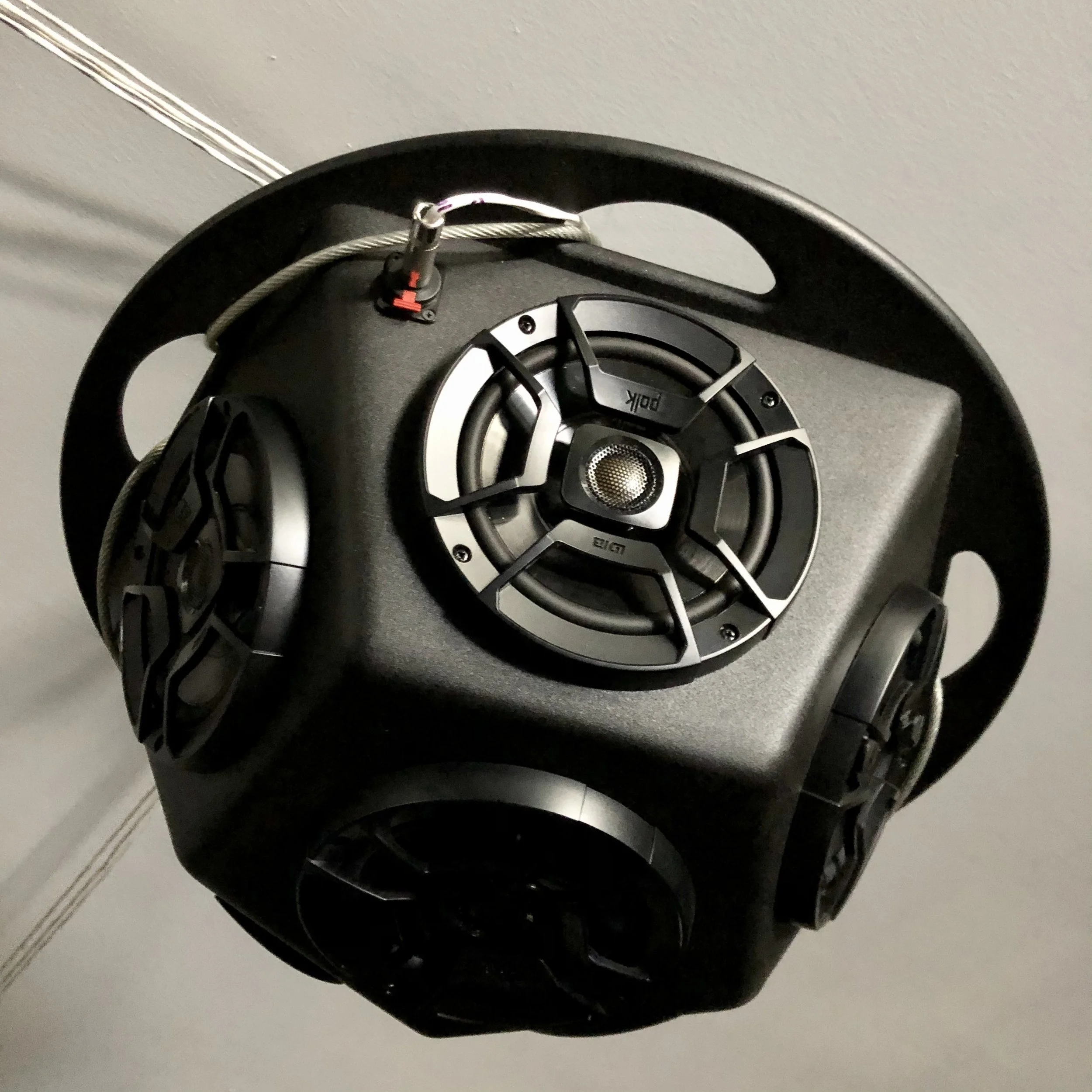Harvestworks New Works and Creative Residency 2025 proposal
I propose to create an 8 to 16 channel piece based on ideas from my 24 channel Nocturnal sound installation (a work in progress). Nocturnal is an immersive sound installation which builds on ideas from a number of my past immersive installations which explore the complex sonic relationships within natural ecosystems and environments. Much of my work has centered around these large scale installations which you can see by looking through my website and which I have included in my documentation submission. Many of my multi-channel works - both solo and collaborative - have been shown in prominent public and gallery settings.
image: Prairie - Chicago Cultural Center - (2013) - utilizing over 400 speakers.
Nocturnal is anticipated to be completed in early 2025. This piece is comprised of 24 speakers, mounted in short tubes and positioned on the floor. Exact positioning is site-specific and will be set into a particular space by the artist. The piece explores systems of synchronicity in large environments of rhythmic sounds as well as continuous sounds. These kinds of sound are often generated by large populations of insects (crickets, cicadas, etc.) within ecosystems, where moving in and out of synchronicity is often one important aspect in communication within these populations. While the sounds in this piece are generated in a more mathematical way - a kind of sonic moiré pattern of interference, the reference to natural ecosystems is intended as well.
My proposed project with Harvestworks (working title: Grass) would draw deeper into current research in insect biology and behavior, and would work with more detailed neural networks and delay line systems within the context of an ambisonic playback system to explore some of the ideas present in current research on these natural systems. For instance, quoting from the abstract of the paper “Rhythm Generation and Rhythm Perception in Insects: The Evolution of Synchronous Choruses” by Manfred Hartbauer and Heiner Römer :
“Insect sounds dominate the acoustic environment in many natural habitats such as rainforests or meadows on a warm summer day. Among acoustic insects, usually males are the calling sex; they generate signals that transmit information about the species-identity, sex, location, or even sender quality to conspecific receivers. Males of some insect species generate signals at distinct time intervals, and other males adjust their own rhythm relative to that of their conspecific neighbors, which leads to fascinating acoustic group displays. Although signal timing in a chorus can have important consequences for the calling energetics, reproductive success and predation risk of individuals, still little is known about the selective forces that favor the evolution of insect choruses. Here, we review recent advances in our understanding of the neuronal network responsible for acoustic pattern generation of a signaler, and pattern recognition in receivers.”
For this proposed project, I would consult with Biologists working within this area of research, and would develop working models in Max/MSP to simulate some of the kinds of neural networks and other systems at work within these insect populations and the resultant kinds of acoustic environments they create. While the research would provide valuable insight into generative methods of producing various levels and subtle modulation of synchronous pulses and other thyrhmic sounds within a large spatialized environment, the composition / installation would ultimately be shaped and composed with human perception and aesthetics as the primary consideration, and would push the boundaries of what can be done within multi-speaker ambisonic systems.
One of the 16 CLEAT speakers designed by Stephan Moore hung in a grid overhead in the Elastic Arts performance space.
While I have worked with custom multi-channel systems (raw speakers, etc.) and also with systems like the CLEAT system at Elastic Arts in Chicago, I have less experience using ambisonic speaker arrangements. I have a number of pieces that use basic 8 channel arrangements of speakers in a head-height circle around the audience, but I tend to use this more as 8 individual channels than as actively moving sound sources using ambisonic panning, etc.
For this residency, I would request an engineer with experience working in ambisonics - particularly within Max/MSP who could work with me to construct and spatially control the large number of spatially active voices required by my desire to create an active environment that approximates those of large groups of insects and other sound producing creatures who exhibit that kinds of group behaviors I have described.
While I would plan on spending some significant time in the studio at Harvestworks with an engineer working on the precise spatializations of the work, speaker placement, etc., the possibility of presenting this piece at an event at NYU has also been raised by Michael Shumacher and others, and this is certainly one possibility that I would like to pursue. The work would either be presented as a durational installation, or possibly as a fixed duration performance depending on what seems most appropriate.
Example of an ambisonic monitoring setup.




